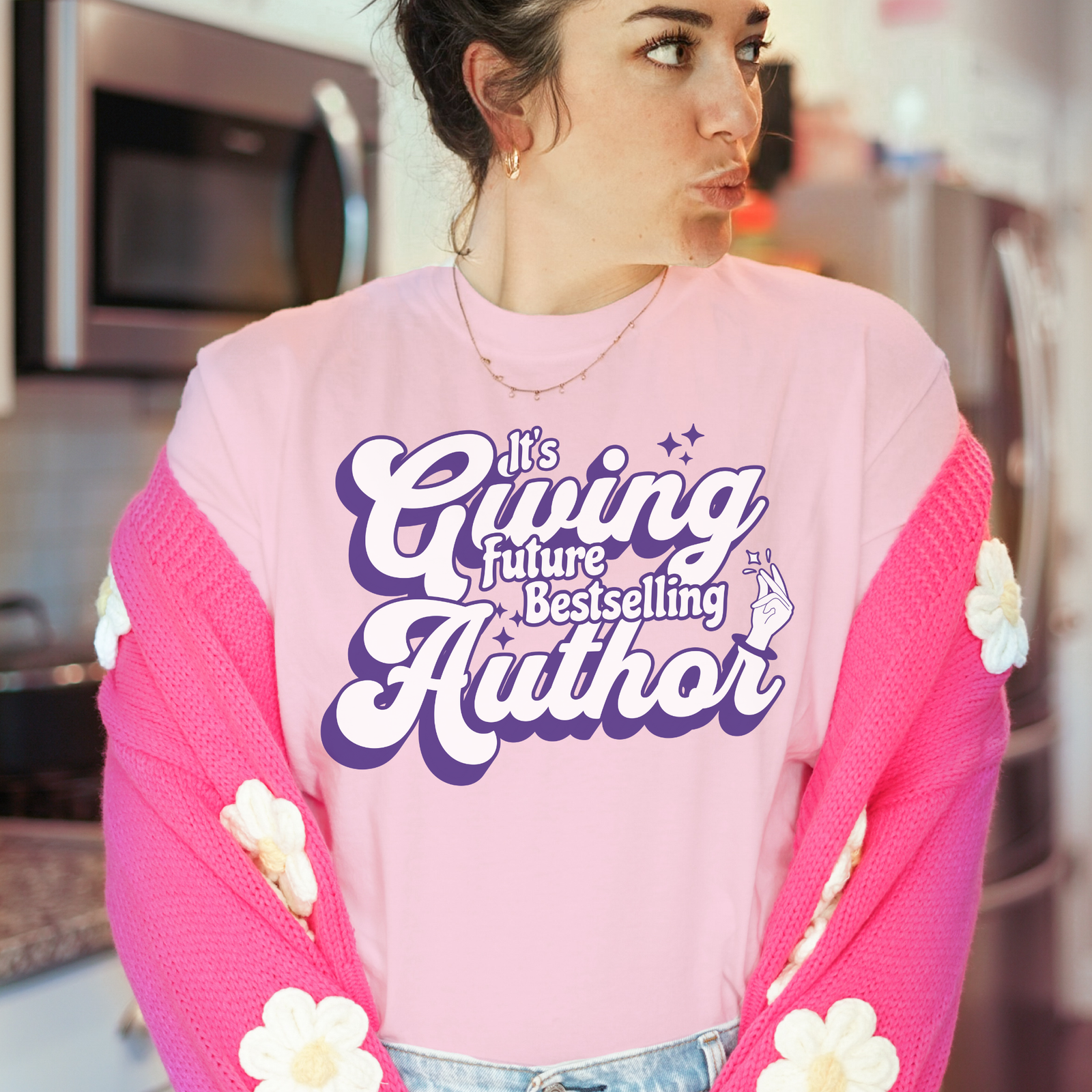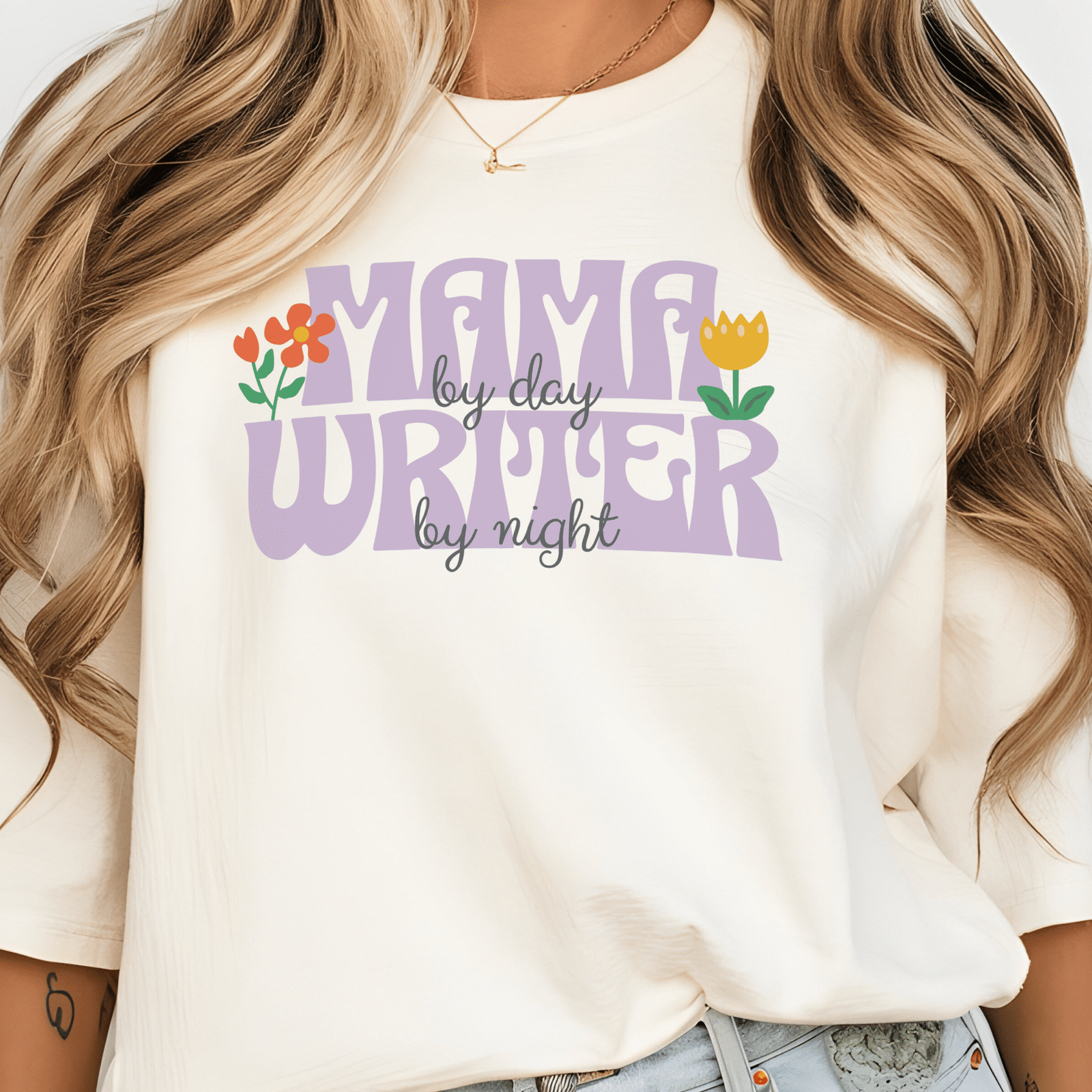There’s a ton of writing software out there, which are not necessarily built for the same kind of work. Some are more appropriate for poetry, which I have listed and explained in my post: 6 Best Writing Apps for Poets Who Want to Publish Their Book. Some are what I call the “all-round apps”, and can be used for any form of writing. And some writing software are tailor-made for plotting and writing fiction, or for structuring non-fiction.
In this post, we’re focusing specifically on the best writing software for fiction and non-fiction writers. Whether you’re drafting your debut novel or writing your next non-fiction book, these apps will help you get the job done so you can hit “publish.”
Let’s break down what to look for first.
What To Look Out For
Outlining & Organizational Features
You’ll want something that makes it easy to break your book into chunks, like chapters, scenes and sections. Fiction writers need tools for plotting. Non-fiction writers need help managing outlines, and references.
Formatting Options for Books and Manuscripts
Whether you’re submitting to a publisher or self-publishing, formatting matters. Tools that offer headers, styles, chapter breaks, and clean exports will save you hours down the line.
Real-Time Collaboration or Cloud Sync
If you’re working with editors, co-authors, or beta readers, cloud sync and live editing features are must-haves, and are especially useful for nonfiction projects involving teamwork.
Multiple Export Options (DOCX, PDF, ePub)
You’ll likely need different formats depending on your publishing plans. Good writing software makes exporting painless.
Now, let’s look at the top tools you should consider when choosing book writing software for your projects.
1. Google Docs
Google Docs may not be the first tool that comes to mind when you think about writing a novel or a nonfiction book, but it’s one of the most useful writing tools for writers, especially if you’re working with others or switching between multiple devices. It’s cloud-based, which means your work saves automatically as you type. No need to worry about your laptop crashing or forgetting to hit “save.” You can access your manuscript from a phone, tablet, or desktop computer, and everything stays synced across devices.
For fiction writers, Google Docs is particularly helpful when you’re sharing chapters with critique partners or beta readers. The comment and suggestion tools make it easy for others to give feedback without messing up your original draft. If you’re co-authoring a book or participating in a group writing challenge, it’s even better. Everyone can work on the same document at the same time.
Non-fiction writers will appreciate the ease of inserting links, managing outlines, and collaborating with editors.
While as a book writing software, it lacks advanced formatting features for publishing-ready manuscripts, it handles drafting and editing like a pro.
Export options: PDF, DOCX, EPUB, plain text, HTML
Pros:
- Completely free and easy to use
- Real-time collaboration is seamless
- Automatically saves and backs up your work
Cons:
- Limited typography, formatting and page layout control especially for print books
- Cannot withstand very long manuscripts, and can lag or glitch when scrolling
2. Microsoft Word
Microsoft Word has been around for decades, and for good reason. It’s powerful, reliable, and widely accepted by publishers, editors, and agents. While it’s not the flashiest book writing software out there, it remains a good choice for both fiction and non-fiction writers who need a bit more formatting capabilities and professional output. It’s often the default tool in workplaces and academic settings, so if you’re already familiar with it, using Word for your book can feel like a natural extension of your writing routine.
Fiction writers often use Word to prepare manuscripts for submission, especially since most literary agents and publishers still prefer .doc or .docx files. With its support for track changes and comments, it’s also useful during the editing and revision stages. These features make it easy to see every edit and piece of feedback in one place, so you can review changes without having to lose your original draft.
Non-fiction writers benefit even more from Word’s features. Where there is a need to insert charts, footnotes, citations, or creat structured outlines, Word is built to handle it.
Export options: DOCX, PDF, RTF, HTML, plain text
Pros:
- Recognized and accepted by most publishers
- Excellent formatting and editing tools
- Great for both drafting and final manuscript preparation
Cons:
- Requires a paid subscription for Microsoft 365
- Can feel overwhelming due to the sheer number of features
3. LibreOffice Writer
LibreOffice Writer is the go-to writing software for fiction writers and non fiction writers who want a full-featured writing tool without spending money. As part of the open-source LibreOffice suite, it has many of the core functions of Microsoft Word but comes without a subscription or software license. If you’re looking for writing tools for writers that are cost-effective yet do the job, LibreOffice Writer is a good option.
Fiction writers who need want to work offline and have various formatting options with control over their manuscript’s layout will find this software capable. You can set up your chapters, create a table of contents, apply consistent styles, and export to formats like PDF or .docx with ease. While it doesn’t have any built-in features for story structure or scene management, it’s more than enough for a writer who already has their plotting system in place elsewhere.
For non-fiction authors, LibreOffice Writer offers a straightforward environment to draft and organize complex material. While writing your memoir, self-help book or a guidebook, you’ll appreciate its ability to handle long documents, multiple chapters, and references. It also works completely offline, which is a plus if you prefer distraction-free writing or are working in areas without consistent internet access.
Export options: PDF, EPUB, DOCX, ODT, RTF, HTML
Pros:
- 100% free with no limitations
- Good formatting capabilities for long documents
- Works across Mac, Windows, and Linux
Cons:
- Outdated interface compared to modern tools
- No collaboration or cloud sync features
4. Scrivener
If you ask around in any writing community, chances are Scrivener will come up, especially among novelists and storytellers. It’s long been considered the ultimate writing software for fiction writers, and once you get used to its interface, it’s hard to go back to anything else. Scrivener gives you an entire system for organizing scenes, research, character profiles, timelines, and more.
For fiction writers, the corkboard view is a game-changer. It allows you to plot your story by dragging and dropping scenes as digital index cards. You can manage multiple storylines, and always keep a bird’s-eye view of your novel. Scrivener also includes folders for character notes, locations, and world-building, making it perfect for long or complex projects like fantasy novels, or series.
Non-fiction writers will find Scrivener just as useful. You can structure your chapters easily, move sections around, and keep research notes in split-screen alongside your draft. This makes it ideal for creating research-heavy books, memoirs with shifting timelines, or non-fiction books that rely on large amounts of reference material.
Export options: DOCX, PDF, RTF, EPUB, MOBI, plain text
Pros:
- Designed specifically for large writing projects
- Excellent organizational tools for scenes, chapters, and notes
- Exports to multiple publishing formats
Cons:
- Steeper learning curve for new users
- Requires a one-time purchase, with separate licenses for Mac and Windows
5. Atticus
Atticus is a newer tool that’s been gaining momentum among self-publishing authors. It was built to be a one-stop solution for writing, formatting, and exporting your book in print and eBook formats. If you’re looking for book writing software that can take you from first draft to publish-ready layout, Atticus is absolutely worth considering, especially for indie authors who don’t want to use multiple tools.
For fiction writers, it gives a clean writing environment along with professional formatting templates. If your goal is to self-publish, it makes the entire process easy. You can format your book to meet Amazon KDP or IngramSpark specs without hiring a designer, and the final product will look polished and professional.
As a writing software for non fiction writers, it offers structured formatting options and makes it easy to create chapter titles, subheadings, and section breaks without fighting your word processor. You can also add back matter like author bios or call-to-action pages without needing extra software.
Export options: EPUB, PDF, DOCX
Pros:
- Combines writing and professional formatting in one tool
- One-time purchase, no monthly subscription
- Built for indie authors with export options for major platforms
Cons:
- Doesn’t offer many tools for outlining or organizing your draft while you write
- Still a newer platform, so some features are limited compared to other, more established software
6. Ulysses
Ulysses is a beautifully minimalist writing app designed for Apple users. While it might look simple on the surface, it’s surprisingly a powerful app making it one of the most well-loved writing tools for writers who value a distraction-free environment. With its clean interface, smart organization system, and seamless syncing across Apple devices, it’s ideal for writers who just want to write, without any complicated formatting menus or technical setups.
As a writing software for fiction writers, Ulysses is perfect for first drafts. Its simple, distraction free editor keeps your focus on writing, and its goal tracking tools can help you hit daily or weekly word counts. Many novelists use Ulysses to draft their work before exporting to a formatting tool like Atticus or Vellum.
Non-fiction writers will appreciate how Ulysses makes managing multiple sections easy.
Export options: EPUB, PDF, DOCX, HTML
Pros:
- Sleek and elegant design with focus on writing
- Syncs effortlessly across Mac, iPhone, and iPad
- Great for clean, simple drafting
Cons:
- Apple-only, no support for Windows or Android
- Subscription model may not appeal to all writers
7. Reedsy Book Editor
Reedsy Book Editor is a free tool designed specifically with self-publishing in mind. It’s especially helpful for authors who need to create professionally formatted books without having to use complicated design tools. As a writing software for non fiction writers, it stands out because it makes it easy to organize your book and create a professional layout, right from your browser.
For fiction writers, Reedsy Book Editor offers enough structure to organize chapters and sections, while still keeping the writing process simple. If your manuscript is already drafted elsewhere, you can paste it into Reedsy and instantly turn it into a print-ready or eBook format with professional-quality layout.
Non-fiction writers stand to benefit even more. If you’re writing a self-help book, educational material, or a business guide, Reedsy makes it incredibly easy to create a well-organized, attractive book, with templates. You can add headings, front and back matter, and even collaborate with editors through the platform. Since it’s online and cloud-based, you can access it from anywhere and never worry about losing your work.
Export options: EPUB 3, PDF (print‑ready)
Pros:
- Free to use with no installation required
- Professional formatting for print and eBooks
- Built-in collaboration tools for editors
Cons:
- Requires internet access to use
- Doesn’t offer advanced tools for outlining, tracking character development, managing research, plotting, or note-taking like Scrivener.
8. LivingWriter
LivingWriter is a newer platform, but it’s quickly become a praised writing software for fiction writers. It’s fully cloud-based, with an interface that’s clean and easy to navigate.
For fiction writers, LivingWriter stands out because of its built-in story templates. Whether you’re writing a mystery, a romance, or a fantasy novel, you can start with a ready-made template and plot structure, and customize it to your story. Instead of starting with a blank page, you’re given a pre-structured outline that breaks your story into key sections, like character setup, rising tension, and climax. You can customize these sections however you want, so it works as a flexible guide, not a rigid formula. This is helpful for writers who like having a roadmap but still want full creative control.
With LivingWriter, you can also rearrange scenes, build character boards, and outline chapters all from one screen. This is a plus if you’re writing something complex and want to stay organized from the start.
Non-fiction writers aren’t left out either. There are non-fiction templates such as Biography and Self Help that can be used to structure your book and organize content into logical sections.
Export options: PDF, DOCX, Amazon Manuscript Format (KDP-ready)
Pros:
- Built-in templates for story and book structure
- Strong organizational tools for chapters, scenes and story elements
- Cloud-based with autosave and device sync
- Simple and modern interface with minimal learning curve
Cons:
- Subscription-based pricing
- Still growing, hence may not have the most advanced features if needed
9. Dabble
Dabble is often described as “Scrivener without the learning curve,” and that’s a pretty fair assessment. It’s one of the newer writing tools for writers, and its strength lies in combining ease of use with smart plotting features.
Fiction writers will especially love Dabble’s plot grid feature. It lets you map out storylines and move scenes around without disrupting your flow. It’s fantastic for complex stories, especially those working on fantasy, sci-fi, or multi-POV novels. And because it’s cloud-based, your work syncs across devices, making it easy to write from anywhere.
Non-fiction writers can also benefit from Dabble’s organization tools. If you’re writing a book with multiple sections or chapters, like a guide, memoir, or how-to, it’s easy to break things into parts and keep everything clear and tidy.
Export options: DOCX (Microsoft Word), Plain text, Web‑shareable document.
Pros:
- Easy to learn and quick to set up
- Cloud sync keeps your project updated across devices
- Built-in organization tools for plotting or structuring content
Cons:
- Subscription required
- Lacks advanced formatting options for publishing
10. Storyist
Among the best writing software for fiction and non-fiction writers, Storyist is a long-standing Mac-focused book writing software that caters to both fiction and non-fiction writers. It offers manuscript and screenplay templates, an organized workspace, and compatibility with iOS, which means you can write on your Mac, iPad, or iPhone and stay in sync across devices. If you’re in the Apple ecosystem and want a reliable tool that doesn’t overwhelm you, Storyist deserves a look.
Fiction writers will appreciate the built-in manuscript and screenplay templates. The layout is clean, and you can organize chapters, characters, and plot notes in a sidebar that keeps everything accessible without distracting from the actual writing.
Non-fiction writers can take advantage of Storyist’s project folders to manage different parts of their book. You can keep outlines, chapter drafts, notes, and even images together in one file. It’s ideal for memoirs, educational books, or anything that benefits from structured writing in a distraction-free interface.
Export options:
- Individual file formats: RTF (.rtf), RTF with attachments (.rtfd), DOC (.doc), DOCX (.docx), ODT (.odt), HTML (.html), TXT (.txt), Final Draft XML (.fdx), Scrivener (.scriv), Fountain (.fountain)
- Book/ebook formats: ePub (.epub), Kindle (via “Kindle Book” export) and PDF (.pdf)
Pros:
- Beautiful, Apple-friendly interface
- Project-based organization for long-form work
- Works on Mac, iPhone, and iPad
Cons:
- No Windows or Android version
- Limited export features compared to newer tools
Final Thoughts: Finding Your Perfect Writing Software
Your best choice of software really depends on what you’re writing, how you like to work, and what you’re willing to spend.
If you’re a fiction writer plotting a novel, tools like Scrivener or LivingWriter might be worth every penny. If you’re writing non-fiction and need clean structure and formatting, Atticus or Reedsy Book Editor could save you hours of frustration.
To have a better understanding on how to choose the right file format when exporting your manuscript, you can read my blog post here.
Whatever you’re working on, I hope this post helped you get closer to finding the tool that works for you. Wishing you all the best in your writing journey. You’ve got this.

















